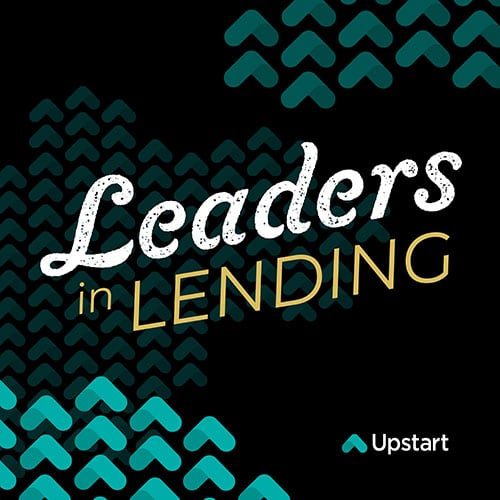Joseph Mayans is the Chief Economist for Experian North America, where he leads the Economic Strategy Group. In this role, Joseph breaks down the latest economic and consumer credit trends into actionable insights for the financial services industry and helps organizations navigate the opportunities and risks of the business cycle. Joseph is a LinkedIn Top Voice to follow for finance and economics, a member of Fannie Mae’s Home Price Expectations Survey Panel, and a member of Bankrate’s Economic Survey Panel. Prior to joining Experian, Joseph was the founder and principal economist of Advantage Economics, LLC – an economic consultancy. Before that, he led economic research at Zions Bank. He also served as legislative staff for US Senator Jerry Moran (KS), where he specialized in banking, small business, and technology policy. He has a Master of Arts in Economics from Wichita State University in Kansas.
Leaders in Lending | Ep. 164
AI & The Fed: Is Hiring Changing?
This week, host Lynn Sautter Beal welcomes Joseph Mayans, Chief Economist at Experian North America, to discuss the key economic drivers impacting lending in 2025 live at the CBA conference.


GUEST SPEAKER
Joseph Mayans

ABOUT
Experian
Experian is the world's leading global information services company. During life's big moments - from buying a home or a car, to sending a child to college, to growing a business by connecting with new customers - we empower consumers and our clients to manage their data with confidence. We help individuals to take financial control and access financial services, businesses to make smarter decisions and thrive, lenders to lend more responsibly, and organizations to prevent identity fraud and crime.
Key Topics Covered
-
How inflation and policy changes will impact lending strategies
- The future of auto and small business lending opportunities
- Navigating economic uncertainty while balancing growth and ris

"Spending growth really was very solid through 2024. Spending growth was rising faster than income growth. You can't have that happen forever."

"You have companies who are cautious about the environment, maybe say, "hey, instead of hiring a software engineer, let's see what we can do with AI here."

"That's one reason why the Fed may cut more than twice this year, because they realize that an environment that the labor market is not absorbing workers very quickly, that a large technical layoff is a good result."
EPISODE RECAP & SUMMARY
As the economic landscape shifts, financial institutions must recalibrate their strategies to balance growth, risk and liquidity. In the face of uncertainty, a “Slow and Grow” approach is emerging as a sustainable way to navigate the market in 2025. In this episode of Leaders in Lending live from the 2025 CBA Live conference, Lynn Sautter Beal is joined by Joseph Mayans, Chief Economist at Experian North America, to explore the key economic drivers—especially the influence of AI and evolving labor market dynamics— shaping the lending industry.
Balancing Hiring and Technological Advancements
Joseph points out that while certain sectors of the economy continue to show momentum, the pace of hiring may remain lower than expected. One factor contributing to this potential slowdown is companies’ increasing adoption of AI-driven solutions. Rather than expanding headcount, many organizations are asking, “How can we use AI to become more efficient and scalable?” This can perpetuate a labor market that struggles to absorb new workers quickly—one reason Joseph suggests that the Federal Reserve might consider more than two rate cuts this year, should job market conditions soften further.
The Federal Reserve’s Dilemma
Managing this economic uncertainty puts the Fed in a challenging spot. They must weigh inflation control against labor market concerns. Joseph notes that if hiring rates don’t pick up, the Fed may opt for more aggressive monetary policy adjustments. While the exact path of rate decisions remains unclear, these moves could significantly impact everything from consumer lending rates to commercial financing options.
Embracing Change: AI in Lending and Beyond
A recurring theme is the importance of adaptability and staying nimble in the face of economic shifts. As AI continues to expand beyond tech companies into more traditional “legacy” businesses, financial institutions can leverage these tools for everything from due diligence to B2B customer support. Joseph highlights how his own teams are adopting AI to become more efficient, reflecting a broader industry-wide move toward automation and data-driven processes.
Staying Humble in a Rapidly Evolving Landscape
Looking ahead to the remainder of 2025, Joseph’s primary advice for lenders is to stay humble. With major technological disruptions reshaping how companies operate—and potentially influencing both the labor market and consumer behavior—clinging too tightly to past assumptions can lead to missed opportunities or underestimating new risks. Instead, financial institutions should remain open to adjusting forecasts and strategies as conditions change.
The “Slow and Grow” Mindset
Despite uncertainties, there are still areas of opportunity in lending. According to Joseph, improvements in lending standards—especially in sectors like auto loans and small business lending—can offer room for cautious growth. By adopting a measured “Slow and Grow” approach, lenders can mitigate risk while positioning themselves to capture market share when conditions improve.
Moving Forward with Confidence and Adaptability
As 2025 continues to unfold, financial institutions that remain flexible, embrace new technologies like AI, and monitor the Fed’s rate decisions will be better prepared to thrive. Joseph’s insights remind us that an environment of rapid change calls for humility, agility, and a willingness to pivot.
Joseph’s insights provide valuable guidance for navigating the economic landscape and offer actionable advice for lenders to thrive in 2025 and beyond. Stay tuned for more expert advice on Leaders in Lending as we continue to explore the evolving financial landscape.



